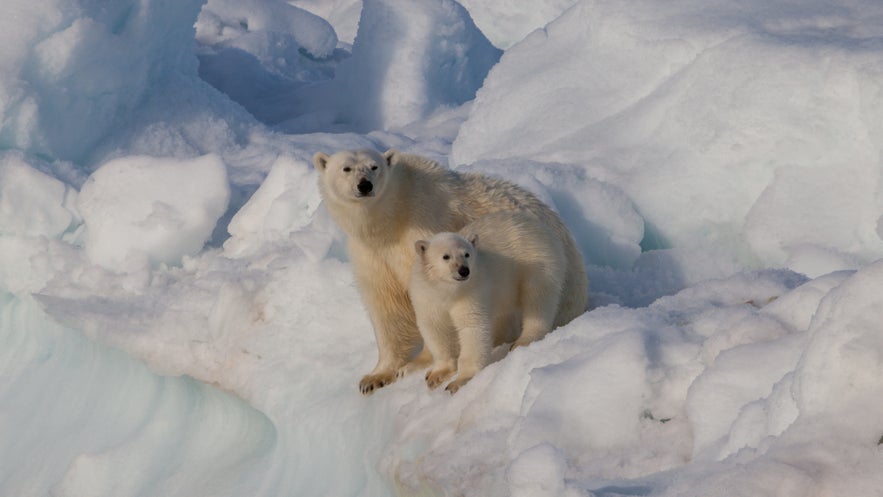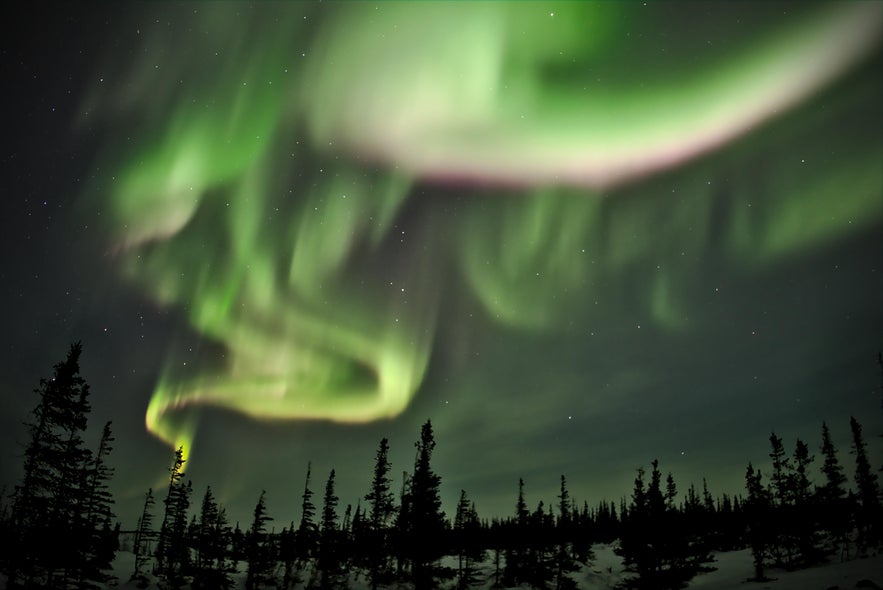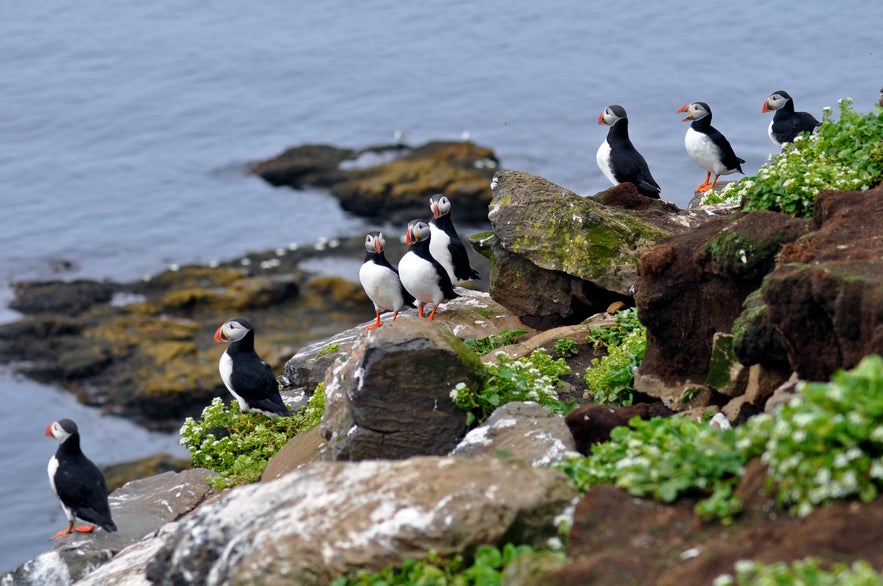The Arctic Circle

Travelers who want to visit the Arctic Circle to explore some of its diverse attractions should book a trip to Iceland and Greenland today. For example, this Arctic Circle airplane trip to Grimsey island and this five-day summer tour of the Golden Circle and Greenland will let you venture into the beautiful nature of the Arctic.
The Arctic Circle is known mainly for its expanse of ice sheets that stretch from the North Pole to the Arctic Ocean. While frozen water covers most of its areas, the region offers diverse landscapes, with mountains, forests, coastal wetlands, tundra, seas, and islands.
Photo from Wikimedia, Creative Commons, by AWeith. No edits made.
What is the Arctic Circle?
The Arctic Circle is an imaginary line above the equator shown on most maps of the Earth. It is one of the five circles of latitude that connects all locations on the planet through parallel east-west rings, namely the Equator, Tropic of Cancer, Tropic of Capricorn, and the Antarctic Circle.
Although the Arctic Circle is an imaginary line, it’s a universally accepted marker that defines the northern hemisphere covering the Arctic region and the Arctic Ocean.
Though winter brings heavy snow and freezing temperatures to the region, the summers can be surprisingly temperate.
Location of the Arctic Circle
The current location of the Arctic Circle is 66°33′ north of the equator. This position is not constant and fixed, as it depends on the Earth’s axial tilt, which currently stands at 23.4 degrees.
In a cycle of 41,000 years, the axis of the Earth undergoes a significant change by around two degrees. The angle change contributes to the northward movement of the circle by 48 feet (14.5 meters) annually.
Flora and Fauna in the Arctic Region
There is a common misconception that only a few plants and animals can live in the Arctic Region’s frigid temperatures. However, this is far from the truth, as the northern polar circle is home to some unique wildlife and vegetation.
The polar bear is the most famous wild animal associated with the Arctic Circle. This top predator lives in most of the countries and territories in the Arctic region, particularly Alaska, Russia, Greenland, and Canada.
Other animals that live or migrate in the Arctic are the Arctic fox and wolf, snowy owl, walrus, narwhal, gray whales, belugas, orcas, salmon, and more.
In terms of the Arctic region’s flora, as many as 1,700 plant species grow here. A combination of mosses, shrubs, herbs, and flowering plants thrive in the region’s tundra. The most common species include the Arctic poppy, lichens, cottongrass, moss campion, and purple saxifrage.
Polar Night and Midnight Sun in the Arctic Circle
With the position of the Arctic Circle in the northern hemisphere, there are times when the region is constantly exposed to the sun or hidden from it. These phenomena are called the midnight sun and polar night.
Midnight Sun
The midnight sun in the Arctic occurs during summer, from May to August. The sun does not set during this time, and the area gets extended daylight. The peak of this phenomenon occurs at the summer solstice in late June.
In Iceland, this can be the best time to join adventure and sightseeing tours because you get extra daylight hours.
For example, you may join this three-hour snowmobiling tour on Vatnajokull glacier or this four-day summer tour of the South Coast with glacier hiking. If you want to explore independently, you can book this six-day midnight sun summer self-drive tour of Iceland.

Photo from Flickr, Creative Commons, by Emmanuel Milou. No edits made.
Polar Night
In contrast, the polar night in the Arctic occurs during winter, peaking from November to January. During this period, the polar region gets shorter daylight and longer night time. At its peak at the winter solstice, the sun does not rise at more northern latitudes.
With darker skies in the Arctic Circle, travelers and locals will have better chances of seeing the northern lights. The elusive aurora borealis displays colorful and shimmering light waves that appear tens or hundreds of miles away from the Earth’s surface. These magical lights are best seen in darker skies, away from human activities.
If you’re visiting Iceland during winter, you can see the northern lights through guided sightseeing tours such as this small group northern lights tour from Reykjavik or this northern lights hunting from Akureyri.
On the other hand, if you want to see the aurora borealis for a longer time and explore your own, this 10-day northern lights self-drive tour of the Ring Road of Iceland is your best option.
However, Iceland always has a few hours of sunlight, even during midwinter, as it is at the lower latitudes of the Arctic Circle.
What are the Eight Countries in the Arctic Circle?
The Arctic Circle is roughly 9,900 miles (16,000 kilometers) in circumference and about four percent of the Earth’s surface. Although the Arctic Ocean and the North Pole cover most of its area, eight countries are within the Arctic Circle.
In the North American continent, there are two countries with territories in the Arctic Circle. Approximately 40% of Canada is in the polar circle, specifically Nunavut, Yokun, and the Northwest territories. Meanwhile, Alaska, the northernmost state of the US, is also in the ring.
On the other hand, the remaining countries in the Arctic Circle are all on the Eurasian continent.
Russia and Greenland have the most land area in the region. At least one-fifth of Russia’s landmass is in the Arctic, stretching along its northern coastline of 15,000 miles (24,1500 kilometers). Greenland, a part of the Kingdom of Denmark, has over two-thirds of its frozen landmass in the circle.
Other countries in the Arctic region include Norway, Sweden, Finland, and Iceland.
Most of Norway’s northern regions are above the Arctic Circle but are stretched out in different areas. These territories are Svalbard, Bear Island, Jan Mayen, and the northern counties of mainland Norway.
The archipelago of Svalbard hosts polar bears, seals, and walruses in its icy fjords, mountains, and glaciers.
Meanwhile, the Norrbotten county and Lapland region are the areas of Sweden and Finland that cross the Arctic Circle, respectively.

Photo from Flickr, Creative Commons, by Jennifer Boyer. No edits made.
Grimsey Island of Iceland in the Arctic Circle
Iceland is the smallest country in the Arctic Circle, with the least territory crossing the polar circle. However, this particular location in the land of fire and ice is also one of the most beautiful places you can visit in the region.
Grimsey Island is located just 25 miles (40 kilometers) off the coast of North Iceland. Measuring just two square miles (five square kilometers), Grimsey is the furthest inhabited island in Iceland to the north, though it has less than 100 residents.
The island is primarily a fishing village because of its rich fishing grounds. Fortunately, it has also evolved into a tourism hub, allowing visitors like you to explore its breathtaking beauty all year round.
While staying in Grimsey, you’ll have access to accommodations, cafes, and a mini-airport. These amenities will ensure you have everything you need for a relaxing stay.
Sightseeing, birdwatching, and whale watching are the most popular activities on Grimsey island. Apart from the surrounding North Atlantic Ocean and basalt column cliffs, the island attraction boasts iconic landmarks such as the Century Stones, Grimsey lighthouse, and the Orbis et Globus sculpture that signifies the end border of the Arctic Circle.
Meanwhile, the most popular thing to do on the Icelandic island is birdwatching. The island is home to over a million birds from around 60 species, including razorbills, northern fulmars, and the famous puffins.
If you join guided package tours in Grimsey, you’ll receive a diploma stating that you have stepped foot on the Arctic Circle. If not, you may purchase it from the local souvenir shop.
How to Get to Grimsey Island and Other Attractions to See in North Iceland
Iceland is not only home to Grimsey island. The land of fire and ice boasts diverse attractions you can’t find anywhere else.
To maximize your travel experience to Grimsey island, you can add several stops in North Iceland. These added stops can include towns and villages with ports that can take you to the island.
Akureyri to Grimsey in North Iceland
Akureyri, the capital of North Iceland, is one of the closest towns to Grimsey island. One of the most common ways to get to Grimsey is by taking an airplane trip from Akureyri.
A roundtrip flight to Grimsey island from Akureyri can take about one to two hours, depending if you’re taking an express or regular flight. Typical tours on the island last for two hours, but you can stay longer.
After setting foot in the Arctic Circle, you may explore Akureyri and check out its excellent amenities.
The Icelandic town has a great selection of shops, cafes, restaurants, souvenir stores, and accommodations. For example, if you plan on staying overnight or multiple days, you can stay in Guesthouse Akureyri or Akureyri Central House.
While in town, take advantage of excursions like this whale-watching tour from Akureyri and this guided 2.5-hour whale-watching boat trip in North Iceland. On these ocean adventures, you can have close encounters with humpback whales, minke whales, white-beaked dolphins, and porpoises.
//www.youtube.com/embed/v15V7RgzvCU?scheme=https&autoplay=1&mute=1Dalvik Village to Grimsey in North Iceland
Another way to reach Grimsey island is by taking a ferry from the fishing village of Dalvik.
Dalvik is the closest human settlement to Grimsey, where you can take a ferry to the island. A one-way ferry trip to Grimsey from Dalvik takes around three hours. These boat tours are available all year round but with more departures in summer.
Before or after exploring the Arctic Circle through Grimsey island, consider extending your stay in Dalvik. The fishing town is an excellent place to experience skiing, birdwatching, and whale watching.
Dalvik is also near the Bruggsmidjan Kaldi Brewery, the first microbrewery in Iceland. You can taste its preservative-free beers by booking this Arctic coastline sightseeing and culture tour in North Iceland.
Attractions Nearby
Popular categories

Download Iceland’s biggest travel marketplace to your phone to manage your entire trip in one place
Scan this QR code with your phone camera and press the link that appears to add Iceland’s biggest travel marketplace into your pocket. Enter your phone number or email address to receive an SMS or email with the download link.


















